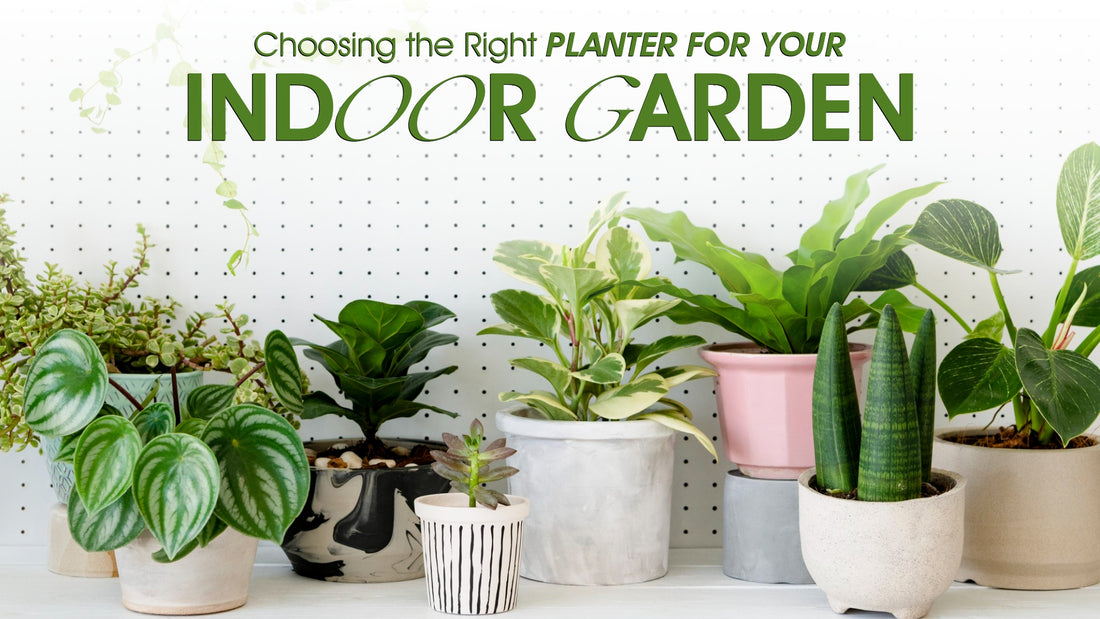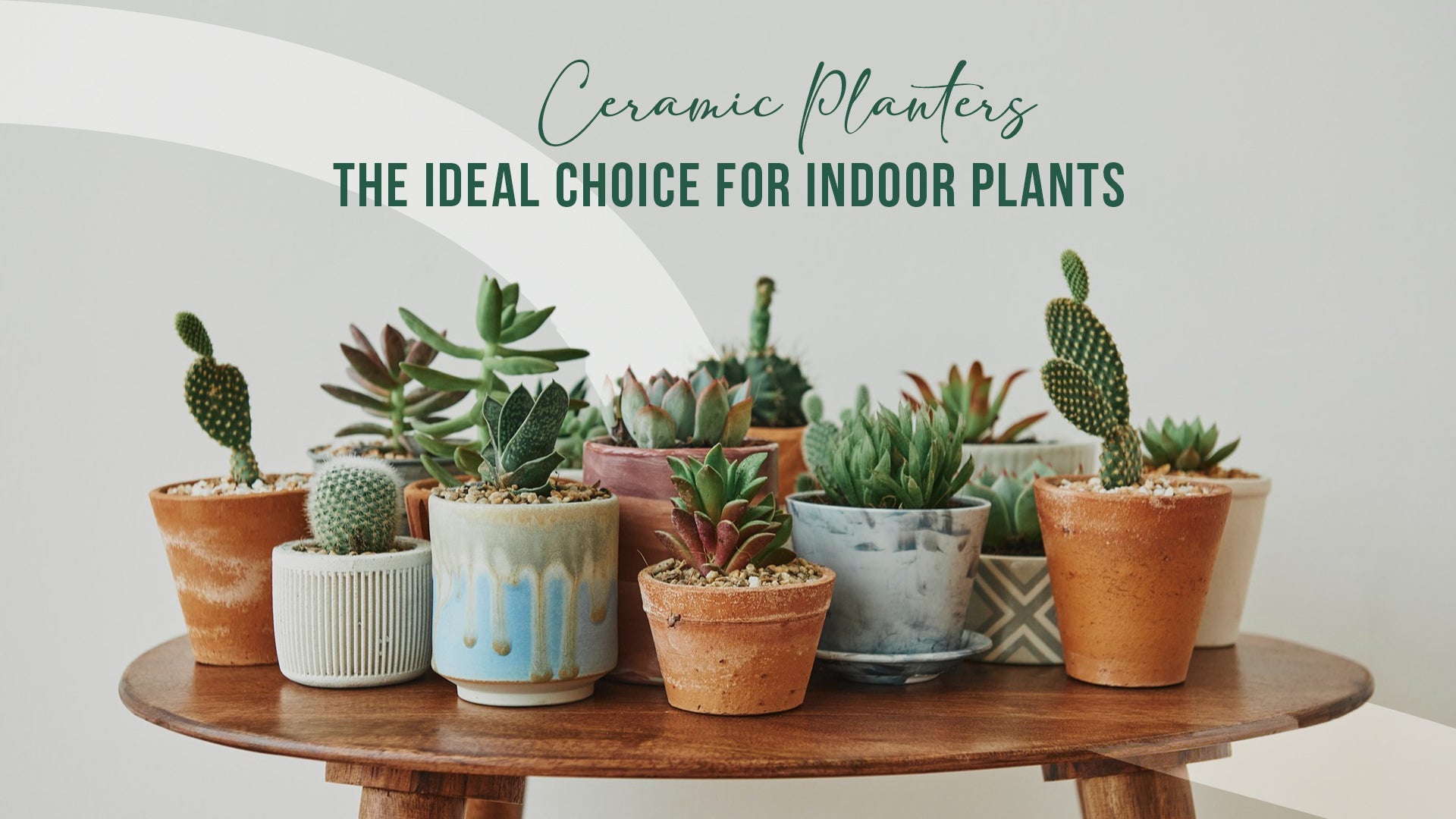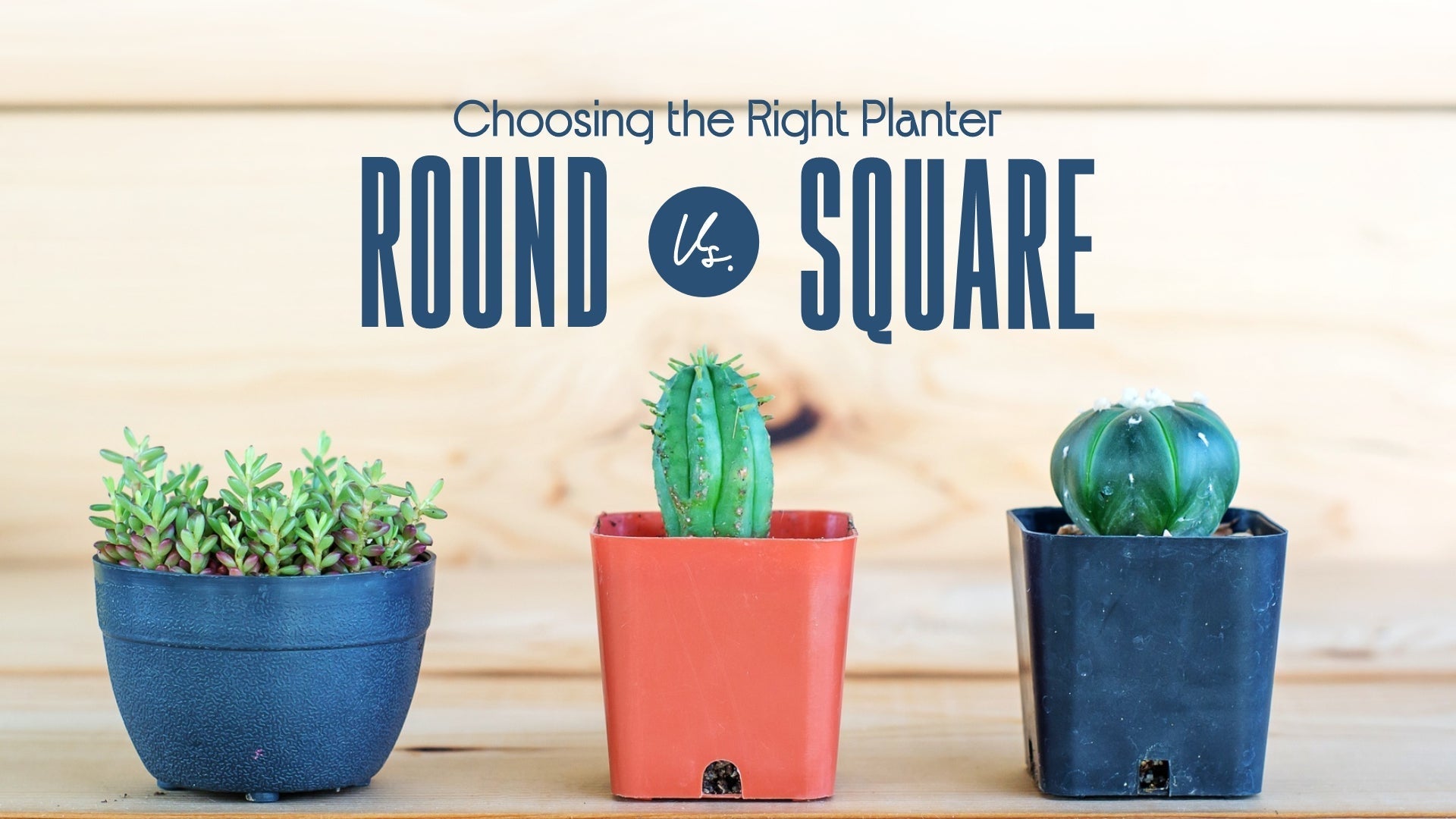
Choosing the Right Planter for Your Indoor Garden
When it comes to indoor gardening, choosing the right planter is like getting the perfect home for your plants. It's about creating the greatest possible environment for your green companions to flourish, not simply about appearances. Let's discuss why choosing the correct planter is so important.
Planters provide everything indoor plants need, including support and nutrients. Your interior space's overall ambiance, as well as the health and beauty of your plants, can be greatly influenced by the sort of planter you select. Consider your pots as comfortable beds where your plants may flourish and show their beauty.
Considerations Before Choosing a Planter
1.Size and Space Constraints
Before you start browsing for planters, take a good look at the space where you plan to put them. The size of your space will help determine the size and number of planters you can have. Also, think about the size of the plants you want to grow. A big plant needs a big planter, while smaller plants can cozy up in smaller homes.
2.Plant Needs
Just like us, plants have their preferences. Some like lots of sunlight, while others prefer shady spots. Some are thirsty and need frequent watering, while others like to keep their roots dry. Before choosing a planter, ensure you understand what your plant pals need to stay happy and healthy. Some plants like room to spread their roots, so they need deep planters, while others are fine with shallow ones.
3.Indoor Conditions
Your indoor environment plays a big role in your plant's well-being. Is your space bright and sunny, or do you rely on artificial light? Is it humid or dry? All these factors can affect your plant's growth and health, so it's essential to consider them when selecting a planter.
Types of Indoor Planters
There's a wide variety of planters for your indoor garden. Each type of planter has its characteristics, advantages, and drawbacks. Let's take a closer look at some popular options:
1.Terracotta Planters

Terracotta planters are made from clay, which gives them a natural, earthy look. They are porous, allowing air and water to pass through, promoting healthy root growth.
Pros
- They are affordable and readily available.
- Their porous nature helps regulate moisture levels in the soil.
- Terracotta is a durable material that can withstand outdoor and indoor environments.
Cons
- They can be heavy, especially when filled with soil.
- Terracotta can absorb water, leading to faster evaporation and more frequent watering.
Suitable Plants and Care Tips
- Terracotta planters are ideal for plants that prefer well-drained soil, such as succulents and cacti.
- To prevent the pot from drying out too quickly, consider lining it with a plastic pot or sealing it with a waterproof coating.
2.Ceramic Planters

Ceramic planters come in a wide range of colors, shapes, and designs, making them a versatile choice for indoor decor. They're typically glazed, giving them a smooth, shiny finish.
Advantages
- They add a pop of color and style to any indoor space.
- Ceramic planters retain moisture well, reducing the frequency of watering.
- They are durable and can last for years with proper care.
Potential Drawbacks
- Ceramic planters can be more expensive than other options.
- Some ceramic planters may be prone to cracking or chipping if not handled carefully.
Plant Varieties and Maintenance Advice
- Most houseplants thrive in ceramic planters as long as they have proper drainage.
- To prevent water from pooling at the bottom of the planter, use a layer of gravel or pebbles before adding soil.
3.Plastic Planters
Plastic planters are lightweight and come in various shapes, sizes, and colors. They're often budget-friendly and suitable for both indoor and outdoor use.
Benefits
- Plastic planters are lightweight and easy to move around, making them ideal for apartments or balconies.
- They are durable and resistant to breakage, making them suitable for households with pets or children.
- Plastic planters are available in various designs, including self-watering options for added convenience.
Tips for Selecting Durable Containers
- Look for planters made from high-quality, UV-resistant plastic to prevent fading and deterioration.
- Ensure the planter has adequate drainage holes to prevent waterlogging and root rot.
4.Self-Watering Planters
Source - Pinterest
Self-watering planters have built-in reservoirs that provide a constant water supply to the plant's roots. This innovative design helps maintain optimal moisture levels and reduces the need for frequent watering.
Advantages of Indoor Gardening
- Self-watering planters are perfect for busy individuals or those with limited gardening experience.
- They help prevent overwatering and underwatering, promoting healthier plant growth.
- Self-watering planters are particularly beneficial for plants with specific watering needs or sensitive to fluctuations in soil moisture.
Recommendations for Plant Varieties
- Most indoor plants can thrive in self-watering planters, but they're especially suitable for moisture-loving plants like ferns, peace lilies, and spider plants.
- When using self-watering planters, monitoring the water level regularly and refilling the reservoir as needed to ensure your plants stay hydrated is essential.
Choosing the Right Planter
Choosing the right planter for your indoor garden is like finding the perfect home for your beloved plants. You can make an informed decision after exploring the different types of indoor planters and considering factors like size, plant needs, and indoor conditions.
No matter which type of planter you choose, the key is ensuring it meets your plants' specific needs and complements your indoor space. By selecting the right planter, you can create a beautiful and thriving indoor garden that brings joy and freshness to your home.
So, pick out the perfect planters for your indoor oasis. With a little care and attention, your plants will reward you with their beauty and vitality, transforming your living space into a green sanctuary. Happy planting!







